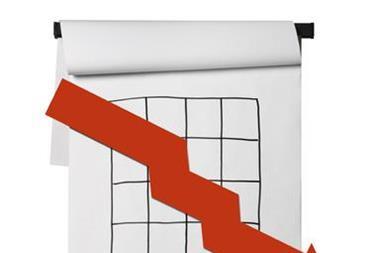Cuts are inevitable in a recession, and training is often the first to go. But Aviva’s Phil Grace says businesses cannot afford half-measures with their risk management strategies
These are testing times for businesses in the UK as many fight to survive. And the recession is likely to have an adverse impact on insurance costs as claims increase in number and value.
Inevitably, businesses will be looking to manage costs but although it is usually possible to shop around and find a cheaper premium, will it be a better deal? By encouraging businesses to demonstrate a proactive approach to risk management, brokers can help them stand out from the crowd and perhaps secure a lower rate of increase or enhanced terms. Every business has the power to manage insurance costs and the decisions it makes influence the premium paid.
While the number and cost of claims determines the premium, businesses also need to be aware that displaying a sound approach to risk management can provide the insurer with confidence. Brokers should encourage their clients to maintain good risk management controls in spite of the challenges the recession brings. Cutting corners here is not acceptable.
In a recession, the focus on risk management should be increased, not decreased. Ensuring a senior manager takes responsibility for managing workplace risk instantly raises the profile of risk management in the business. The next step is to establish sound policies, undertake risk assessments and generally take a proactive interest in what is happening.
By doing this, they will help create a robust and effective risk management culture within their organisation.
What’s important
Brokers play a key role in reminding clients that insurance rarely covers all the losses associated with accidents at work. Businesses must also be aware of the many additional costs to factor in – investigating accidents, modifying machinery, downtime, lost production and perhaps even retraining employees.
In the worst case, there may be a prosecution and fines that need paying. Your client needs to know that while insurance will cover the compensation element of the claim, these other costs must be borne by the business. All the more reason why helping businesses manage risk to keep down costs is important.
Advice is available from health and safety professionals on important tasks such as writing a health and safety policy, training staff, carrying out risk assessments, managing the risk of working at height and so on.
However, the two key fundamentals in helping minimise the risk of accident and injury to employees are risk assessments and training.
Risk assessments amount to nothing more than looking at the work that needs to be done and taking action to reduce the risk. This may involve eliminating a problem – for example, by stopping using hazardous material, ensuring guards are used at all times on dangerous machinery or ensuring people use the correct approach, equipment and training when they undertake hazardous work.
Employees should be trained to recognise danger, appreciate and avoid risk, and do whatever is necessary to work safely.
Make sure records are kept on aspects of risk assessments and training. This not only serves as a reminder of what has been done but also when risk assessments need to be reviewed or training refreshed.
Ensure clients know that if properly written up and recorded, these two activities will serve as evidence that they have done what is required by law, helping with the defence of a civil claim from an injured employee.
A quick look at the circumstances in which the HSE has prosecuted employers reveals that, in many instances, the lack of a risk assessment has resulted in a workplace risk being overlooked and someone being injured.
When Aviva Risk Advisers visits the client the most common advice is to carry out risk assessments and train employees. When claims investigators visit a client following an accident, they often report that a lack of risk assessments and documented training mean it is difficult to mount a robust defence against a claim.
It is also helpful to explain that effective risk management does not necessarily incur high cost. What it does require, however, is ownership and commitment at a senior level and a planned and structured approach.
Guidance is readily available for businesses. Because Aviva has a vested interest in how businesses manage risk, we have a range of information and services to support business, and larger firms can arrange a visit from one of Aviva Risk Management Solutions’ advisers.
The advisers provide practical advice and guidance to companies at no extra cost. Information is available in the form of Hardfacts (free to download from www.aviva.co.uk) or from websites such as Risk Manager (www.aviva.co.uk/riskmanager) or Cut Red Tape (www.cutredtape.co.uk), which include guidance as well as downloadable forms and templates.
If the economists are to be believed, the recession will get worse before it gets better. But if risk management has been something your clients have been meaning to get around to, then now is definitely the time to start.





































No comments yet